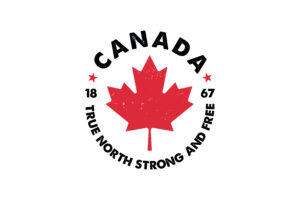As far back as can be searched on the Internet, one can find studies on and reports of Salmonella in poultry. In fact, a 1974 survey of retail purchases found 8.3% of fresh whole chicken fryers to be contaminated with Salmonella; in 1985, both a USDA report and an independent laboratory test found more than 50% of the tested chicken to be contaminated.
While control programs have been attempted by industry, the onus has often been put on consumers, as shown by the lead in a 1987 article which stated: “Until chickens can be raised in test tubes, scientists say Salmonella will continue to pose a threat of food-borne illness to humans.” Then it put the burden on consumers, adding, “Consumers can rest assured: Cooks who practice safe food handling and cooking practices can put an end to Salmonella.” (Interestingly, however, included in the safe handling practices of the time was a step of “Rinsing raw meat thoroughly before use,” which is now considered a hazardous practice as it can spread bacteria.)
With the many advances of the food industry in the nearly four decades since then, one would think we’d have also developed regulations and controls that would take this burden off the consumer – or at least reduce it, recognizing that consumers do still have some responsibility to do their part for food safety. While these are, in fact, evolving, it is only occurring through the continued push of consumer advocates. Probably of most impact was the 2011 petition to USDA from the Center for Science in the Public Interest (CSPI) calling for the USDA to declare certain antibiotic-resistant Salmonella serotypes as adulterants, which would make it illegal to sell any products in which any was detected.
The petition, initiated primarily due to a Salmonella poultry outbreak that sickened 136 people, including at least 37 hospitalizations and one death, was backed by the prominent foodborne-illness attorney Bill Marler, who had led a similar fight against Shiga toxin-producing strains of E. coli adulterants in 2009, and now called on USDA to immediately grant CSPI’s petition.
The USDA didn’t exactly jump on the petition – in fact, it denied the 2011 petition stating that it needed more data, so CSPI submitted a revised version in 2014 with “factual and legal support.” Only recently have active steps, culminating in the August 7, 2024, FSIS proposed rule and determination that “raw chicken carcasses, chicken parts, comminuted chicken, and comminuted turkey products contaminated with certain Salmonella levels and serotypes are adulterated,” which would make it illegal for them to be sold.
Based on research that found that chicken parts with contamination levels exceeding 1 CFU/g pose the highest risk, particularly the serotypes “of public health concern,” the Salmonella Framework for Raw Poultry Products would:
- Deem as an adulterant any detectable level of Salmonella serotypes Enteritidis, Typhimurium, and Enterica (I,4,[5],12:I:-) in raw chicken; and Hadar, Typhimurium, and Muenchen in raw turkey.
- Set the tolerance for any type of Salmonella at less than 10 CFU per gram/ml
- Require that poultry establishments:
- Implement a microbial monitoring program that incorporates statistical process control (SPC) monitoring methods.
- Conduct sampling at rehang instead of pre-chill.
- Conduct paired sampling at rehang and post-chill.
The recent announcement follows the agency’s April 26, 2024, final determination to declare Salmonella levels of or above 1 CFU/gram as an adulterant in raw breaded stuffed chicken products. These products were targeted first due to their history of linkage to Salmonella illness which is attributed to the way the product appears to be cooked even though it is raw. As a proposed rule, industry and other stakeholders have an opportunity to make their voices heard on Salmonella Framework for Raw Poultry Products, with comments due by October 7, 2024.
If passed – and enforced – as proposed, the rule will reduce, if not eliminate, the onus that has been put on consumers for decades to be the last defense against these hazardous bacteria. While consumers will always be a factor in the safe-food practices equation, the stakes, at least for chicken and poultry, should be lowered – if it holds. The new wild card, here, is the recent Chevron ruling (discussed in a recent TAG article) and whether that will be used to push back on the proposed rule. Time will tell.
All content in TAG articles, newsletters, and webpages are developed and written by TAG experts, not AI. We focus on the realities and the science to bring you the most current, exacting information possible.





